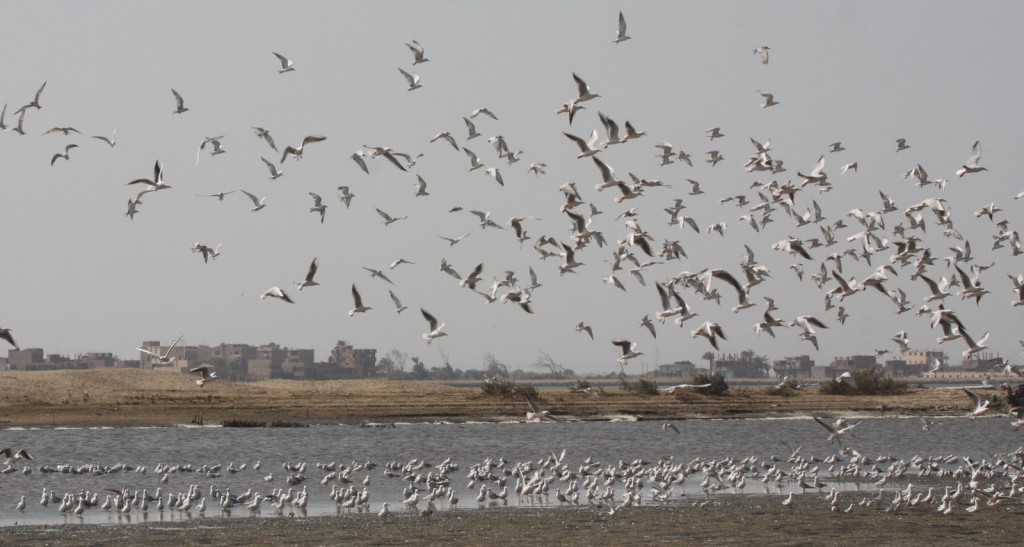Egypt’s Environmental Affairs Agency has designated its first new Wetlands of International Importance since joining the Convention in 1988, two very interesting new sites in Fayoum governorate west of the Nile River.

As described by Ms Charlotte Eyong, Ramsar’s Assistant Advisor for Africa, based upon the Ramsar Information Sheets, Lake Qarun Protected Area (134,042 hectares, 29°34’22”N 030°35’23”E) is a permanent saline inland lake (one of the oldest lakes in Egypt, with Neolithic settlements along the ancient shoreline) with a small island, considered to be one of the most attractive sites for nesting birds in Egypt, and surrounding arid land. About 88 species of birds have been spotted there (in 2010, the waterbird population was estimated to be over 26,000 individuals), as well as more than 12 species of fish.
The site supports threatened species like the endangered slender horned gazelle Gazella leptoceros and vulnerable Gazella dorcas and offers shelter to mammals like the Egyptian hyena, red fox, beaver, kudu and gnu as well as several species of reptiles.
The southern shore of the lake is heavily used for traditional agriculture and more recently for fish farms, and fishermen are active using rowing boats and nets. A commercial plant for extracting lake salts has the added benefit of helping to reduce the lake’s salinity.
Ecotourism activities include desert safaris, boat trips, bicycling and walking through the countryside, horse and donkey rides, guided tours to the famous fossil areas and antiquities, camping in the desert, and working with local craftsmen. The site is threatened by water pollution from domestic and industrial waste disposal practices, in addition to agrochemical contamination and lack of sustainable wastewater management.
